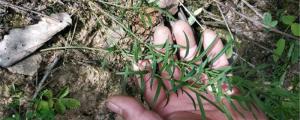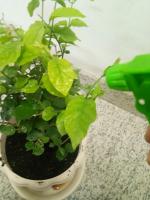How to Patch Concrete Planter from Water Leak
Concrete planters are a great addition to any garden, patio, or outdoor space. They provide an elegant and durable way to display your favorite plants, flowers, and herbs. However, over time, concrete planters may develop cracks, which can lead to water leaks. If left untreated, these leaks can cause serious damage to your planter and your plants. Fortunately, there are several steps you can take to patch your concrete planter from water leaks.
Step 1: Identify the Leak
The first step in repairing a concrete planter is to identify the location of the leak. If the leak is large enough, it may be obvious where the water is coming from. However, if the leak is small, it may be more difficult to locate. One way to identify the leak is to fill the planter with water and observe where the water is escaping.
Step 2: Clean the Area
Once you have identified the location of the leak, the next step is to clean the area around it. Use a wire brush or sandpaper to remove any loose concrete, dirt, or debris. Make sure the area is free of dust and dry before proceeding.
Step 3: Apply Concrete Patching Compound
The next step is to apply a concrete patching compound to the area around the leak. There are several types of patching compounds available, such as hydraulic cement, latex patching compound, and epoxy. Follow the manufacturer's instructions to apply the compound properly.
Step 4: Smooth out the Patching Compound
Once you have applied the patching compound, use a putty knife or trowel to smooth out the surface. Make sure the patching compound is level with the surrounding surface. If necessary, apply a second layer of patching compound once the first layer has dried.
Step 5: Let the Patching Compound Dry
Allow the patching compound to dry completely before painting or sealing the planter. This may take several hours or overnight depending on the type of patching compound you used. Check the manufacturer's instructions for the recommended drying time.
Step 6: Paint or Seal the Planter
Once the patching compound has dried, you can paint or seal the planter to protect it from future water damage. You can use a waterproof sealant to prevent water from seeping into the concrete. Or, you can paint the planter using a waterproof paint or a paint specifically designed for use on concrete surfaces.
Conclusion
Patching a concrete planter from water leaks is a straightforward process that can help protect your planter and your plants. By following these simple steps, you can quickly repair any cracks in your planter and prevent water from seeping out. With a little bit of effort and the right materials, you can enjoy your concrete planter for years to come.

 how many times do yo...
how many times do yo... how many planted tre...
how many planted tre... how many pine trees ...
how many pine trees ... how many pecan trees...
how many pecan trees... how many plants comp...
how many plants comp... how many plants can ...
how many plants can ... how many plants and ...
how many plants and ... how many pepper plan...
how many pepper plan...





























